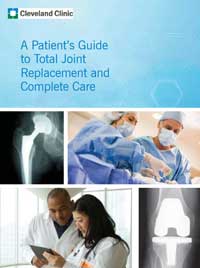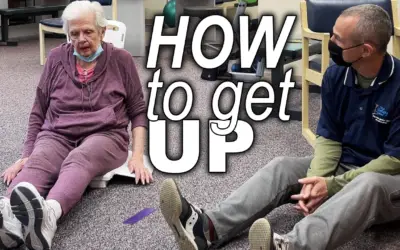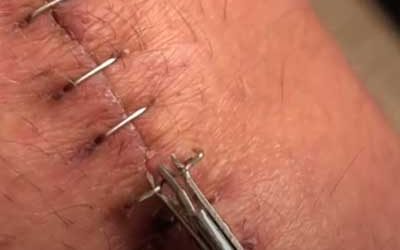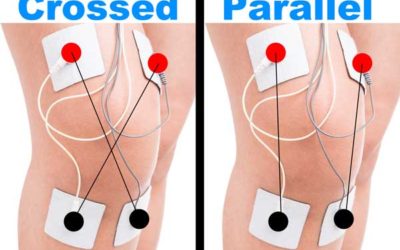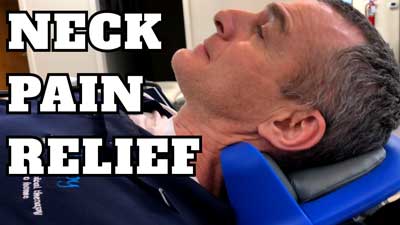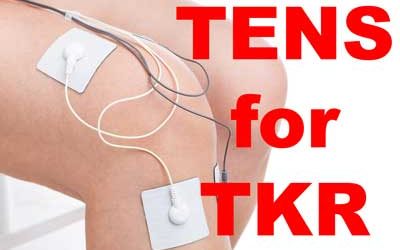Preparing for a Knee Replacement the EASY Way
The best way to prepare for a total knee replacement surgery is to follow these three steps:
Step 1 – Take a pre-operative knee replacement class.
Step 2 – Schedule a pre-operative physical therapy evaluation.
Step 3 – Create a battle plan for your recovery.
Step 1 – Take a pre-operative knee replacement class.
Cleveland Clinic’s A Patient’s Guide To Total Joint Replacement and Complete Care is a great resource with comprehensive checklists from one of the leading joint replacement programs in the country.
A total knee replacement class will teach you everything you need to do before surgery, the day of surgery, and after surgery.
What if my surgeon doesn’t offer a class?
If your surgeon doesn’t offer a class then consider taking my class or find one online or in person.
Much of the material is the same regardless of surgeon or surgical procedure.
Step 2 – Schedule a pre-operative physical therapy evaluation.
Physical therapy is widely recommended after a joint replacement. Clients may also choose to start physical therapy before a joint replacement.
As a physical therapist myself, I can tell you that some of the most important parts of a pre-surgical physical therapy evaluation is the time spent answering questions, taking measurements, practicing with your walker, and preparing you for the best possible outcome.
What can I expect from a pre-surgical physical therapy evaluation?
Since your physical therapist has most likely worked with several hundred patients who have already had a hip or knee replacement you will be able to learn from all of that experience.
Your therapist has seen the good and the bad and will provide you with great advice for your before surgery.
Your therapist will also be able to help you fit your walker, cane, or crutches to your body and teach you how to use these devices with enough time for you to get some practice.
You will develop a pre-surgical strength and conditioning program that will not make your knee pain worse, but will help you improve the muscle health and improve your body’s ability to recover from surgery.
I recommend having a pre-operative physical therapy evaluation approximately 6-weeks prior to surgery. This will allow you enough time to learn everything you need and practice the exercises you have been shown.
Step 3 – Create A Battle Plan
Joint replacement surgery is major surgery. You should hope for the best while planning for the worst.
This means you want to start with a list of all the daily chores and responsibilities you perform in a day. Then decided who will be performing these activities while you are recovering.
In the best case scenario you should plan to be unavailable for 2 weeks, but this could be as long as 12 weeks depending on your body’s response to surgery.
Determine who will buy groceries, who will prepare meals, who will wash laundry, clean the bathrooms, take out the trash, feed the pets.
The less you have to worry about after surgery the better your recovery will go.

More Blog Posts …
Top 3 Devices To Help Get An Elderly Person Up From The Floor
3 Best Devices in 2021 To Help An Elderly Person UP from the Floor After a Fall. Under $100, Under $1,000, and Over $2,000
Lymphedema LIVE Class Registration
WHAT: In this LIVE class you will learn what you can do to manage swelling, reduce pain, and improve healing after a total knee replacement surgery. Dr. Andrea Leifer, PT, CLT-LANA is a lymphedema expert and educator. WHEN: March 31, 2021 at 3PM EST WHERE: Online Zoom...
10 Questions About Leg Elevation After Knee Surgery
Physical Therapist Anthony Maritato, PT Recommends the 3 BEST leg elevation pillows after knee replacement surgery | 10 Common Questions Patients Ask
Does It Hurt To Have Staples Removed After Knee Replacement Surgery
Removing Staples After Knee Replacement Surgery Staple removal is often painless and quick. In the following video a person removes his staples at home, but it is always recommended you allow your physician or surgical team remove the staples in their office.Why Are...
BEST Tens Placement for Knee Pain
Is TENS a Good Way to Reduce Knee Pain? Transcutaneous Electrical Nerve Stimulation (TENS) is a non-invasive, drug-free method for pain relief that has been widely used to manage various types of pain, including knee pain. TENS therapy involves sending low-voltage...
How many times a day can you do Neck Traction
Neck (cervical) traction is most commonly prescribed in 10 to 20 minute episodes. In this article I share the BEST positions to use cervical traction and what you NEED to AVOID when using it.
Which Activities Should I Avoid After Total Knee Replacement?
Click here to see a list of activities you should avoid after total knee replacement as well as a BUNCH of activities you may ENJOY.
Why Does my Knee Replacement Make Noise?
Would you like to know why your knee replacement makes noise? Is it a grinding? Is it a clicking? Or is it a popping? Snap, crackle, pop may be common after a total knee replacement. Read on to learn why-
How long should I ICE my knee after knee replacement?
Icing after a total knee replacement should be performed for between 10 and 20-minutes. If icing is painful then consider using heat instead. Explore myths about icing in this article.
Is tens SAFE to use for knee pain?
Have you been wondering if a TENS unit could reduce knee pain associated with arthritis? A TENS unit may be a great drug free way to reduce pain following a total knee replacement. In this article we will discuss how and when to use a TENS unit for drug free pain relief of knee pain.
